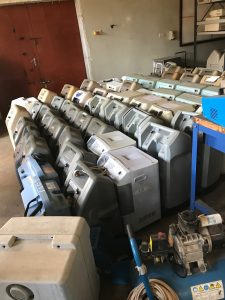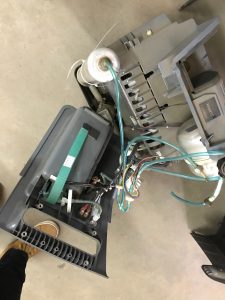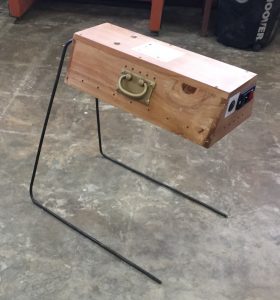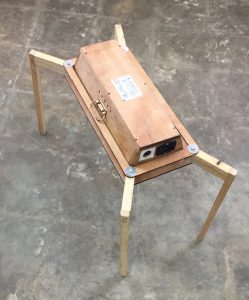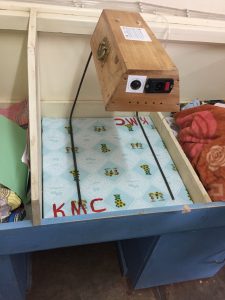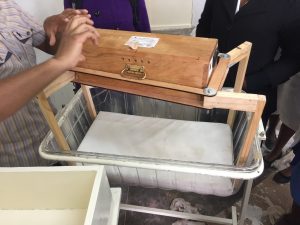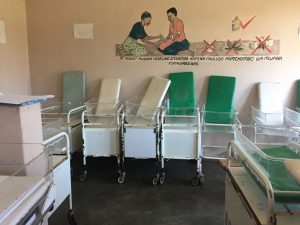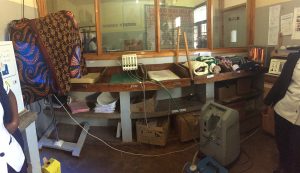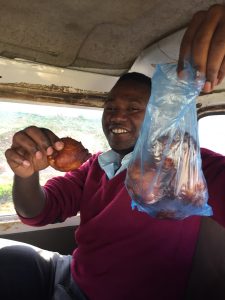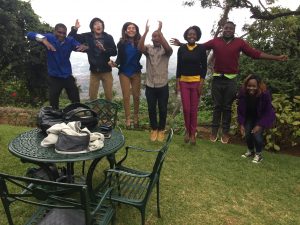A quick reminder for those trying to following along with the blogs and being confused as to who is who. The other 4 Rice interns and 8 Malawian interns are all working in pairs at the Polytechnic University on engineering design projects. I on the other hand am the only intern working in the CPAP office at Queen Elizabeth Central Hospital (QECH or QE). As an ex-engineer and current economist, I’m having a great time helping the CPAP team here analyze information from all the different hospitals where data is collected.
Ideally we could give Pumani CPAPs to a hospital and then they could incorporate training programs into their existing rotations. However, it is much more complicated due to staff switching wards every few months, nurses not being comfortable using CPAPs, and with learning how to use them being viewed as extra work. We’re really pushing to get CPAP training integrated into the curriculum at nursing school to ensure that every nurse who comes into the workforce is prepared to use the device. That would avoid the frequent training and mentorship sessions that are required to maintain a knowledgeable staff at each hospital.
I’m currently looking at a lot of data comparing on-site mentorships with exchange programs. Both of these are methods our CPAP team uses to teach nurses how to use the Pumani devices. The on-site mentorships require that we send an instructor (someone from QE who is very knowledgeable) to go to a smaller district hospital and explain to everyone working there how to use the machines. The exchange programs on the other hand have nurses from the smaller hospitals coming to QE to learn about CPAP devices here and then go home to help introduce more knowledge at their respective hospitals. There are pros and cons to each and our team is currently in the process of trying to determine if one method of training is more effective than other. On one hand, sending a mentor to a site allows more nurses to be trained, but often at smaller hospitals in the week long training window there may not be a child who needs CPAP, thus leaving the mentees without real world practice. On the other hand, the exchange program at QE almost guarantees that a baby will come in needing CPAP care, giving hands-on experience, however less nurses can come and implementation back at their home hospital might be a little more difficult. This is definitely project where it is impossible not to bite off more than you can chew. I’m lucky to be surrounded by numerous, competent, hardworking people!
I was able to go with several members of our CPAP team two weeks ago and see how our data collection/ inventory/ checking-in process works at district hospitals. I was able to assist in replacing parts of CPAP machines that were currently in use at these hospitals and spectated the interviewing process that we conduct with the Matron in the nursery ward (in-charge nurse looking over neonates). Additionally, I was even able to tag along with the Poly interns last week to help with their surveying and questions that pertain to their projects. It was nice to be able to see numerous hospitals and compare similarities and differences. As I was interested in observing CPAPs and phototherapy lights in neonatal wards I stayed with Millie and Kelvin when we split up. They are working on the “PneumaShoe” a device which aids in the circulation of blood for bed-ridden patients. They got some great feedback from nurses in the male and female wards as well as guys from the physical therapy unit. I doubt the name will stay as there are several changes on the horizon! Mostly likely it will switch from being a foot cuff to an adjustable band for calves, things, or arms. I look forward to seeing what they are able to produce. This photo shows them with the Head Nurse at Zomba Central Hospital explaining and testing the device to get feedback.
On the way back from Chiradzulu and Zomba, I asked Andrew if we could buy some sugar cane from someone on the side of the road. The U.S. interns were in for a surprise. It’s an incredible plant and even more incredibly difficult to eat! In order to peel away the bark and get to the inside it feels like you’re going to break your teeth. After ripping huge hunks of bark off you can gleefully bite off a mouthful of fiberous plant, chew it a bit, and then spit it out. While our Malawian collegues who have been eating sugar cane since they can remember pulled this off with ease, Naod, Millie, and I made fools of ourselves. Groaning about our teeth, only pulling small strands of bark away, and confusedly chewing the insides, we also dripped sugar water all over ourselves and ended in a disgraceful mess of bamboo material and sticky juice. We definitely bit off more than we could chew. The picture is of Webster, the pro-bark peeler and how-to teacher.








